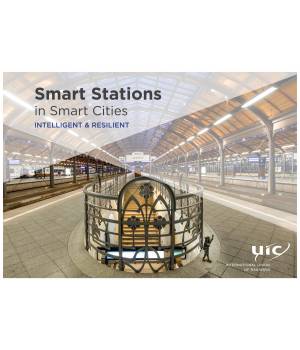
Smart Stations in Smart Cities
What are the reasons for change and what is at stake?
This paper is not a description of railway stations in general. Rather, it seeks to raise the issue of the future of stations and to look ahead to the major societal developments which will undeniably impact on every aspect of stations. That means thinking now about the new paradigms about to hit stations in terms of the functionality and services they offer.
In this paper, we take a two-pronged approach which encompasses both station managers and station users. One cannot be seen in isolation from the other. Why look for “smart” solutions, though? And what are the differences between smart and non-smart solutions? Why are the latter less effective?
Taking a smart approach to this matter will add value to the way stations operate and/or the services they provide. It is all about seeking
out new, faster, more effective methods and processes which chime better with the challenges facing cities and railways.
It is also about reducing, as far as possible, the adverse impact of railway business on urban areas and their inhabitants and users (in particular reducing stress and conflict arising from competing uses).
Stations must adapt to their users and their environments. Stations must be able to go the extra mile and their reach should exceed their grasp.
New behaviour patterns result from the influence of technological innovation on users. New products create new needs, and consequently
new practices. These in turn create new types of tension requiring new solutions. As well as solving new potential or real conflicts, smart
solutions can make the impossible possible.
| Author | UIC |
| ISBN | 978-2-7461-2657-2 |
| Pages | 84 |
Data sheet
- Language
- English
- Format
- Downloadable
- Edition
- Ed. no.1
- Edition date
- 01/10/2017
- Publication date
- 24/11/2017
- Page number
- 84
- Theme
- Passenger Voyageurs
- sku
- 5-17021E/PDF
- Reference
- 5-17021
 Cookie preferences
Cookie preferences

